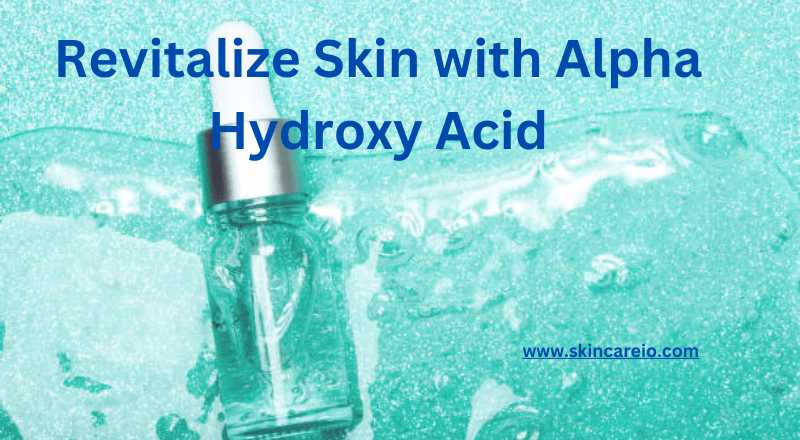Alpha hydroxy acids (AHAs) are a group of naturally occurring acids that are commonly used in skincare for their exfoliating and rejuvenating properties. AHAs are derived from various sources, including fruits, milk, and sugar cane, and they offer several benefits for the skin.
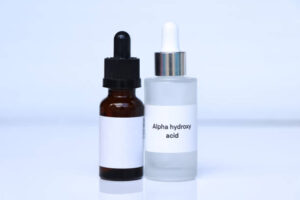
Some key aspects of alpha hydroxy acids for the skin such as AHAs work by breaking down the bonds between dead skin cells on the skin’s surface, which helps to remove them. This process promotes skin cell turnover, resulting in improved texture, smoother skin, and a more radiant complexion.
Common AHAs used in skincare include glycolic acid (derived from sugar cane), lactic acid (derived from milk), citric acid (from citrus fruits), malic acid (from apples and pears), and tartaric acid (from grapes). Each AHA has unique properties and may be suitable for different skin types and concerns.
AHAs can help in the treatment of acne by unclogging pores, reducing the formation of blackheads and whiteheads, and preventing breakouts. They also have mild antibacterial properties. Regular use of AHAs can reduce the appearance of fine lines and wrinkles by promoting collagen production and skin renewal. This can result in firmer, more youthful- looking skin.
AHAs can address hyperpigmentation concerns, including dark spots, age spots, and melasma. They promote the shedding of pigmented skin cells, leading to a more even skin tone. AHAs can help brighten the skin by removing dull, dead skin cells and encouraging the turnover of fresher, more radiant skin. This can result in a more luminous complexion.
Some AHAs, like lactic acid, have humectant properties, which means they can help the skin retain moisture. This can leave the skin feeling softer and more hydrated. AHAs can be used in conjunction with other skincare ingredients, such as antioxidants, niacinamide, and hyaluronic acid, to address multiple skincare concerns effectively.
It’s essential to use sunscreen daily when incorporating AHAs into your skincare routine. AHAs can increase skin sensitivity to UV radiation, making it more susceptible to sun damage. For more significant results, dermatologists and licensed skincare professionals offer AHA chemical peels, which provide a more intensive exfoliation and can address various skin concerns.
If you are new to AHAs, begin with products containing lower concentrations and gradually increase usage as your skin becomes accustomed. Read and follow the instructions provided with the product carefully, including usage frequency and precautions. Always wear sunscreen during the day when using products with AHAs, as they can increase skin sensitivity to the sun.
Read Also: Salicylic Solutions for Radiance
If you have specific skin concerns or conditions, it’s advisable to consult a dermatologist. They can provide personalized recommendations and may suggest stronger treatments if necessary. AHAs can be a valuable addition to a skincare routine, offering benefits such as exfoliation, acne treatment, and anti-aging effects. However, individual responses to skincare ingredients can vary, so it’s essential to monitor your skin’s reaction and adjust your routine as needed for the best results.
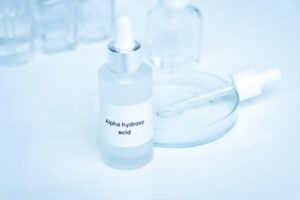
Various Forms of Alpha hydroxyl acids used for skin:
Alpha hydroxy acids (AHAs) are available in various forms in skincare products to address different skin concerns and cater to individual preferences. Some common forms of AHAs used in skincare:
Glycolic Acid:
Glycolic acid is one of the most widely used AHAs in skincare. It is derived from sugar cane and is known for its small molecular size, which allows it to penetrate the skin deeply. Glycolic acid is available in various products, including cleansers, toners, serums, creams, and chemical peels.
Read Also: The Surprising Benefits of Glycolic Acid
Lactic Acid:
Lactic acid is another well-known AHA, often derived from milk or fermented fruits. It is known for its hydrating properties and is suitable for sensitive skin. Lactic acid can be found in cleansers, serums, masks, and exfoliating lotions.
Citric Acid:
Citric acid is derived from citrus fruits and is a milder AHA. It is commonly used in skincare products, including cleansers, toners, and brightening serums. Citric acid provides gentle exfoliation and can help improve skin texture and tone.
Malic Acid:
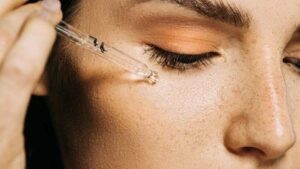
Malic acid is found in apples and pears and is known for its antioxidant properties. It is used in various skincare products, including masks, serums, and peels. Malic acid offers exfoliation and skin-brightening benefits. Tartaric Acid: Tartaric acid is derived from grapes and is often used in skincare products to provide mild exfoliation. It can be found in cleansers, masks, and toners, contributing to smoother and more refined skin.
Mandelic Acid:
Mandelic acid is derived from almonds and is known for being one of the gentlest AHAs. It is suitable for sensitive skin and is used in products like serums, toners, and masks to address concerns such as acne, hyperpigmentation, and fine lines.
Read Also: The Power of Mandelic Acid Revealed
These AHAs, such as alpha hydroxy citrates from oranges and lemons, are used in skincare to offer a combination of exfoliation and antioxidant benefits. They can be found in various product formulations, including serums and creams.
Mixed AHA Products:
Some skincare products contain a combination of different AHAs to offer a broader range of benefits. These formulations can provide both exfoliation and brightening effects.
Chemical Peels:
AHAs are commonly used in professional chemical peels performed by dermatologists or licensed skincare professionals. These peels offer a more intensive exfoliation and can address various skin concerns, including pigmentation issues and signs of aging.
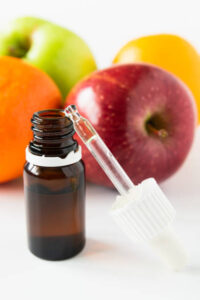
Importance of Alpha hydroxyl acid to Skin:

Alpha hydroxy acids (AHAs) are of significant importance in skincare due to their versatile benefits and potential to transform the health and appearance of the skin. These naturally derived acids, such as glycolic, lactic, and citric acid, play a crucial role in promoting skin rejuvenation.
AHAs are exceptional exfoliants, gently dissolving the bonds between dead skin cells to reveal fresh, radiant skin beneath. This exfoliation not only improves texture but also brightens the complexion, effectively addressing issues like dullness and uneven tone. Furthermore, AHAs can be a powerful ally in the fight against acne, unclogging pores, and reducing breakouts while stimulating collagen production to diminish fine lines and wrinkles, providing a more youthful appearance. Their ability to reduce hyperpigmentation, fade dark spots, and refine enlarged pores makes them invaluable in the pursuit of clearer, smoother skin.
AHAs also contribute to improved moisturization and enhance the absorption of other skincare products, maximizing their effectiveness. By offering a broad range of benefits, AHAs have rightfully earned their place in skincare routines, helping individuals achieve healthier, more luminous skin and boosting overall confidence. However, it is essential to use AHAs responsibly, with proper sun protection and gradual introduction, to ensure the best results while safeguarding skin health.
